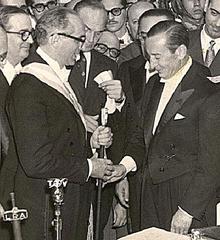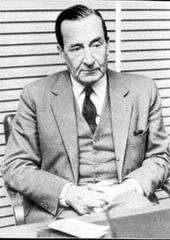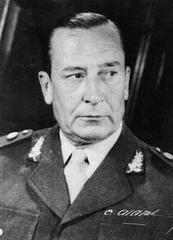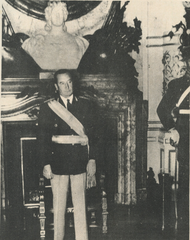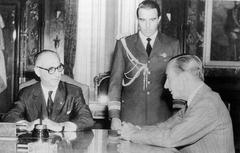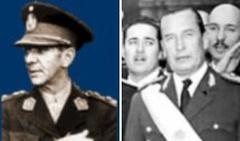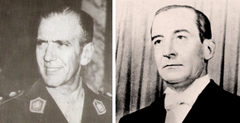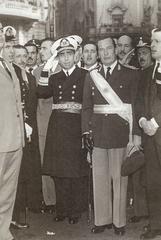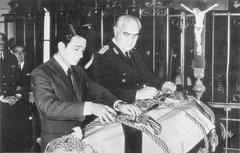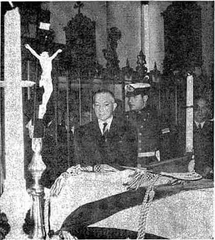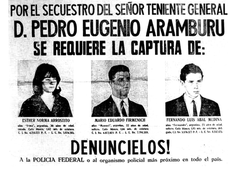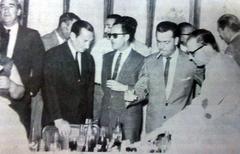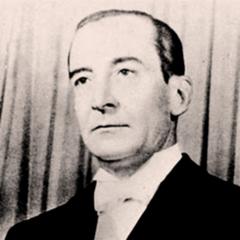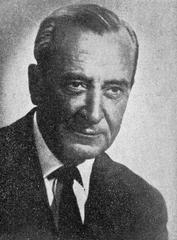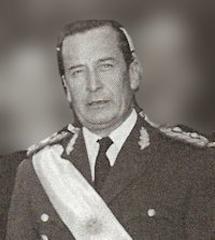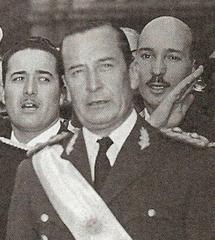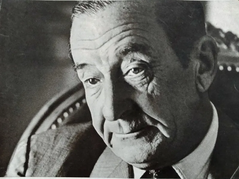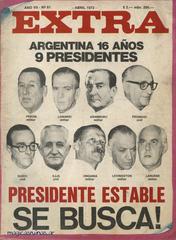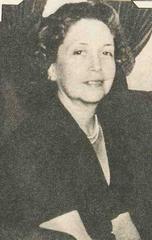
Pedro Eugenio Aramburu Sites in Buenos Aires: Visiting Hours, Tickets, and Historical Significance
Date: 14/06/2025
Introduction
Buenos Aires, Argentina’s vibrant capital, is a city where history, politics, and culture intersect in profound ways. Central to this intricate tapestry is Pedro Eugenio Aramburu, a military leader whose role as de facto president from 1955 to 1958 was foundational in shaping Argentina’s 20th-century political landscape. Aramburu led the 1955 “Revolución Libertadora” coup that deposed Juan Domingo Perón and spearheaded anti-Peronist policies that would have lasting social and political repercussions.
This guide provides an in-depth look into Aramburu’s life and influence, and offers practical advice for visitors seeking to explore Buenos Aires’ historic sites linked to his era. While the city lacks dedicated public memorials to Aramburu—reflecting the contentious nature of his legacy—key landmarks such as the Casa Rosada, Plaza de Mayo, and his monument at Recoleta Cemetery offer context for understanding this pivotal chapter in Argentine history.
Alongside visitor information on hours, ticketing, tours, and accessibility, this guide includes cultural tips and itineraries so travelers can engage with Buenos Aires’ complex political heritage respectfully and knowledgeably. Whether you are a tourist, a scholar, or a history enthusiast, this resource will help you navigate the legacy of Pedro Eugenio Aramburu within the dynamic urban fabric of Buenos Aires (Todo Argentina; Recoleta Cemetery Blog; Mexico Historico; Executed Today; Encyclopedia.com).
Contents
- Introduction
- Aramburu: Early Life and Military Career
- The 1955 Coup and Rise to Power
- Policies and Governance: Anti-Peronism, Labor Suppression, and Repression
- Legacy and Historical Significance
- Visiting Historical Sites Linked to Aramburu in Buenos Aires
- Key Sites: Casa Rosada, Plaza de Mayo, Museo del Bicentenario, Recoleta Cemetery, Calle Montevideo 1053
- Practical Visitor Information
- Visiting Hours, Tickets, Accessibility, Tours
- Cultural Tips and Safety
- Frequently Asked Questions (FAQ)
- Conclusion
- Additional Resources
Aramburu: Early Life and Military Career
Pedro Eugenio Aramburu was born on May 21, 1903, in Río Cuarto, Córdoba Province. A graduate of the National Military College, he rose steadily through the ranks of the Argentine Army. By the early 1950s, Aramburu was a prominent officer, known for his organizational acumen and strong opposition to Peronism—a stance that positioned him as a central figure during the years of mounting tension under Juan Domingo Perón (Todo Argentina).
The 1955 Coup and Rise to Power
Argentina in the early 1950s was a nation divided. Perón’s government, which began in 1946, brought social reforms and championed the working class, but also generated deep opposition from the military, the Catholic Church, and segments of the middle and upper classes (Mexico Historico).
On September 28, 1955, a military coup known as the “Revolución Libertadora” toppled Perón. General Eduardo Lonardi was initially installed as president, but his conciliatory approach was quickly rejected by hardliners. Within weeks, Aramburu replaced Lonardi and assumed the presidency on November 13, 1955 (Todo Argentina).
Policies and Governance
Anti-Peronist Measures
Aramburu’s government undertook a sweeping campaign to purge Peronism:
- Banning Peronist Symbols: References to Perón and Eva Perón were erased from public spaces and institutions. Even the mention of their names was prohibited in the media (Todo Argentina).
- Dissolution of the Peronist Party: The party was dismantled, and Perón himself was exiled (Mexico Historico).
- Purges: Peronist officials and sympathizers were investigated, prosecuted, or removed from power.
Suppression of Labor Movements
The powerful CGT labor union, a Peronist stronghold, was intervened by the government, its headquarters seized, and union leaders arrested. This crackdown triggered a wave of strikes and the emergence of the “Peronist Resistance” (Todo Argentina).
Political Repression and Human Rights
A failed Peronist uprising in June 1956, led by General Juan José Valle, was met with brutal repression: Valle and at least 27 others were executed—an unprecedented event in Argentine politics that left a profound scar on the national psyche (Executed Today).
Consultative Junta and Transition
To legitimize his government, Aramburu formed a Consultative Junta, including representatives from most major parties except the Communists. The junta’s power was limited. Aramburu’s stated aim was to restore constitutional democracy, and he oversaw the elections that returned civilian rule in 1958 (Todo Argentina).
Legacy and Historical Significance
Polarization of Society
The era intensified the divide between Peronists and anti-Peronists, fueling cycles of resistance and repression that continued for decades (Mexico Historico).
Enduring Consequences
- Political Instability: The exclusion of Peronist voices contributed to a recurring pattern of coups and short-lived civilian governments.
- Return of Peronism: Despite efforts to eradicate it, Peronism re-emerged in the 1970s, culminating in Perón’s return in 1973.
- Human Rights Precedents: The 1956 executions set a precedent for later abuses, notably during the “Dirty War” of the late 1970s.
Assassination and Political Retribution
In 1970, Aramburu was kidnapped and executed by the Montoneros, a Peronist guerrilla group, as retribution for the Valle executions. This event underscored the cycles of violence that marked Argentina’s mid-20th-century politics (Executed Today).
Visiting Historical Sites Linked to Aramburu in Buenos Aires
Important Note on Monuments
There are no public monuments or museums dedicated exclusively to Aramburu in Buenos Aires—reflecting the contested nature of his legacy. However, several key sites provide valuable context:
Plaza de Mayo
The city’s central square and political epicenter, Plaza de Mayo witnessed pivotal events during and after the 1955 coup.
Casa Rosada
The presidential palace, seat of government during Aramburu’s presidency, offers free weekend guided tours (book online in advance; ID required). Tours are in Spanish and English. Photography is allowed in most areas (Casa Rosada Official Site).
Museo del Bicentenario
Behind the Casa Rosada, this museum features exhibits on Argentina’s political history, including the Revolución Libertadora and Aramburu’s presidency. Open Wednesday-Sunday, 10:00–18:00. Admission is free (Museo del Bicentenario).
Recoleta Cemetery
Aramburu’s tomb, designed by Alejandro Bustillo in 1972, is located here. The cemetery is open daily, 7:00–19:00. Entrance fee: ARS 200–300. Guided tours are available and highly recommended for historical context (Recoleta Cemetery Blog). The cemetery is also the resting place of Eva Perón.
Calle Montevideo 1053
Site of Aramburu’s 1970 abduction by the Montoneros, this private residence is sometimes included on political history walking tours. Please respect residents’ privacy.
Archivo General de la Nación
This archive houses original documents from Aramburu’s government. Visits require advance registration, and most materials are in Spanish (Archivo General de la Nación).
Practical Visitor Information
Visiting Hours and Tickets
- Casa Rosada: Free guided tours, weekends 10:00–18:00. Book online.
- Museo del Bicentenario: Wednesday–Sunday, 10:00–18:00. Free admission.
- Recoleta Cemetery: Daily, 7:00–19:00. Entrance fee applies; guided tours recommended.
- Archivo General de la Nación: By appointment; research only.
Accessibility
Most major sites are accessible, though some areas in Recoleta Cemetery may be uneven. The city’s public transport is generally reliable; the SUBE card is required for fares.
Guided Tours
Several companies offer political history tours that include these sites. Prices range from ARS 5,000 to 10,000 (USD 10–20) per person. Many tours are available in English; book in advance.
Safety
Buenos Aires is relatively safe for tourists, though petty theft can occur. Be vigilant in crowded areas and avoid deserted streets at night. La Boca is best visited during the day.
Cultural Etiquette
Discussions about Peronism and Aramburu’s legacy can be sensitive. Approach with respect and openness to diverse views.
Frequently Asked Questions (FAQ)
Q: Are there monuments to Pedro Eugenio Aramburu in Buenos Aires?
A: No dedicated monuments exist due to his controversial legacy, but his tomb is at Recoleta Cemetery.
Q: How do I visit Casa Rosada?
A: Book a free guided tour online. Bring ID. Tours are weekends only.
Q: Can I visit the site of Aramburu’s assassination?
A: Calle Montevideo 1053 is a private residence; best seen as part of a guided tour.
Q: Are guided tours of Recoleta Cemetery available?
A: Yes, several companies offer tours in English and Spanish.
Q: Are these sites accessible?
A: Most are, though Recoleta Cemetery has some uneven paths.
Conclusion
Pedro Eugenio Aramburu’s influence on Argentina’s history is undeniable. Though Buenos Aires lacks monuments dedicated to him, the city’s political landmarks—Plaza de Mayo, Casa Rosada, Museo del Bicentenario, and Recoleta Cemetery—offer deep insight into the nation’s turbulent mid-century years. Visitors are encouraged to approach this history with curiosity and sensitivity to local perspectives.
To enhance your exploration, use resources like the Audiala app for curated tours and up-to-date information, and consult local guides or official websites for the latest on tours and events.
Additional Resources
- Todo Argentina
- Mexico Historico
- Executed Today
- Recoleta Cemetery Blog
- Encyclopedia.com
- Forbes Argentina
- MyHeritage: Pedro Eugenio Aramburu
- Espacio Memoria y Derechos Humanos
- Casa Rosada Official Site
- Museo del Bicentenario
- Recoleta Cemetery Official Information
